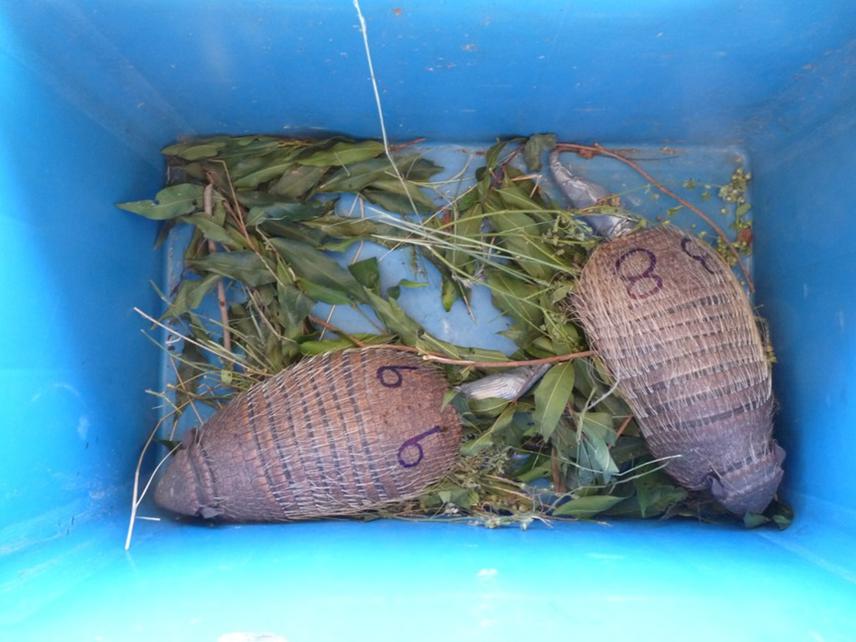Nina Attias
We aim to contribute to armadillo conservation by exploring the spatial, temporal and dietary ecology of four armadillo species using GPS and VHF radio telemetry methods.

Yellow armadillos with GPS devices attached to their tails.
The Pantanal wetlands shelter five of the 21 existing armadillo species, Cabassous unicinctus, Dasypus novemcinctus, Euphractus sexcinctus, Priodontes maximus and Tolypeutes matacus. However, this region is threatened by the substitution of traditional landscape management by more profitable exploration methods. Thus, it becomes necessary to recognize the ecological and spatial requirements of the species that occupy this region to understand how they could respond to the new forms of management and modification of the landscape. Additionally, many gaps on the knowledge of armadillo's basic ecology and natural history remain and also impair efficient conservation strategy planning for the species' and their habitat. Finally, the fact that many species of armadillos, morphologically and taxonomically similar, can coexist in the same area raises interest on the ecological mechanisms behind that fact.
In this study, we will explore the spatial, temporal and dietary ecology of these species using GPS and VHF telemetry methods. This approach enables inferences about:
(1) the area used by each individual and the importance of each landscape feature to the adaptation of the populations, providing a solid foundation for future landscape management plans;
(2) the ecological coexistence mechanisms of similar sympatric species. To accomplish that we will capture 10 individuals of each species in the Pantanal wetlands of the state of Mato Grosso do Sul, Brazil. All captured animals will be equipped with intra-abdominal VHF radio transmitters and external GPS transmitters. Each individual will be monitored for one year.
This information will allow us to make inferences on the degree of overlap of the spatial, temporal and dietary niche dimensions of these species. Given that these species are sympatric in a great portion of their distribution, it is believed that they may adopt strategies of niche partitioning and/or displacement to enable their coexistence. This study will also contribute to armadillo conservation by providing novel understanding of their biology (e.g. diet) and their spatial and temporal dynamics (e.g. home range, activity period and habitat use) in the Pantanal. We will be able to estimate the average area required for basic activities of these species and the features of the landscape used or avoided in each of these activities. The knowledge on the habitat use by different animal groups allows conscious strategy planning for landscape management. Hence, the products of this study should be a contribution for the biodiversity conservation in the state of Mato Grosso do Sul.